MODU's "Weather (Un)Control" exhibition explores the post-Sandy indoor air environment
By Bustler Editors|
Thursday, Dec 12, 2013
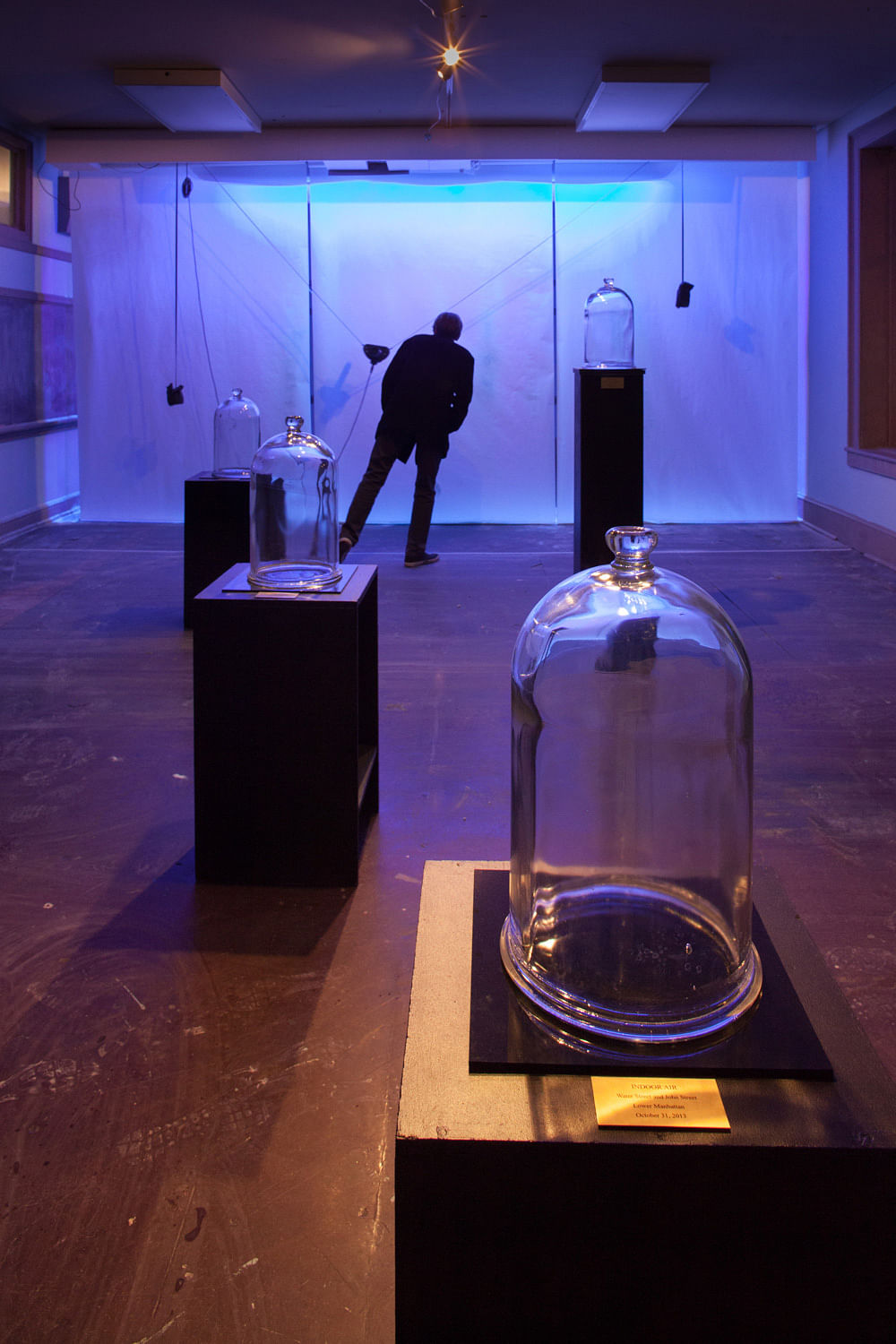
Related
As America's East Coast continues to recover from Hurricane Sandy, MODU's recently completed "Weather (Un)control" exhibition of the Marfa Dialogues/NY highlights an overlooked issue of the storm's aftermath that still remains: the invisible contaminants in indoor air.
The installation features drawings made from artificial dust and static electricity to address the current shortsighted methods for indoor air quality inspection and a "right" to better indoor air.
Weather (Un)Control with Storefront for Art and Architecture for Marfa Dialogues/NY from MODU on Vimeo.
Project description:
"The installation included an indoor weather system generated by two forms of air contamination: dust and static electricity. The project was a timely exploration of the invisible contaminants that fill indoor air long after the weather clears. This invisibly contaminated air, which goes unmeasured by the insurance companies charged with inspecting affected sites, recasts the term 'air rights' as an interior issue."

"Ten percent of New York City buildings sustained storm damage during Hurricane Sandy. While billions of dollars were spent on the recovery effort, the storm’s invisible effects still linger in the air. Health risks in the indoor air of buildings—in the form of mold and dust—are beyond the reach of health officials, who rely mostly on outdoor air monitors."
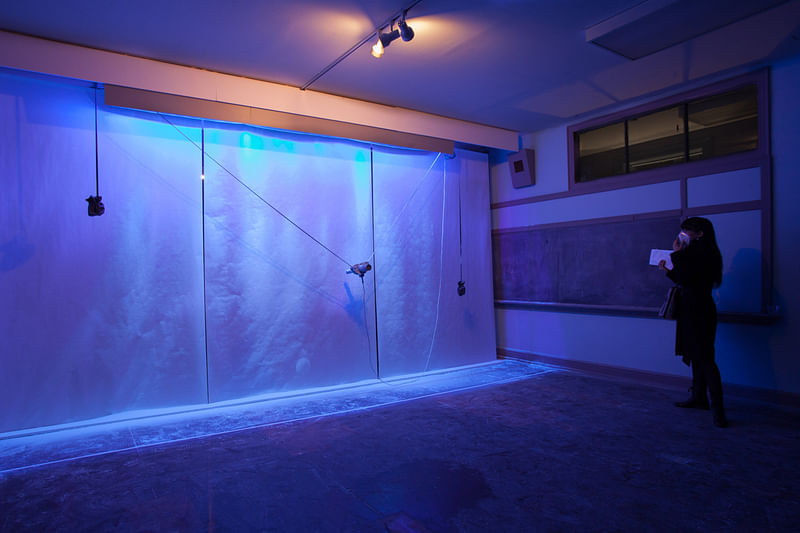
"Dust in Sandy- affected buildings—including asbestos, silica, and gypsum—was produced not only by storm damage but, even more substantially, by the rebuilding that has followed. It remains in the air a year later. Weather (Un)Control presented a 'dust wall' that used two robotic plotters to create ephemeral drawings made of static electricity and artificial dust."

"Since there are no government agencies monitoring indoor air quality, oversight has been left to the insurance companies that determine access to indoor 'air rights.' Rather than conduct air quality tests, the insurance industry relies on visual inspections to measure air contamination as well as determine insurance risk. Weather (Un)Control highlighted the inefficiency of these visual inspections with 'dust wall' drawings that remained invisible unless lit with ultraviolet light."
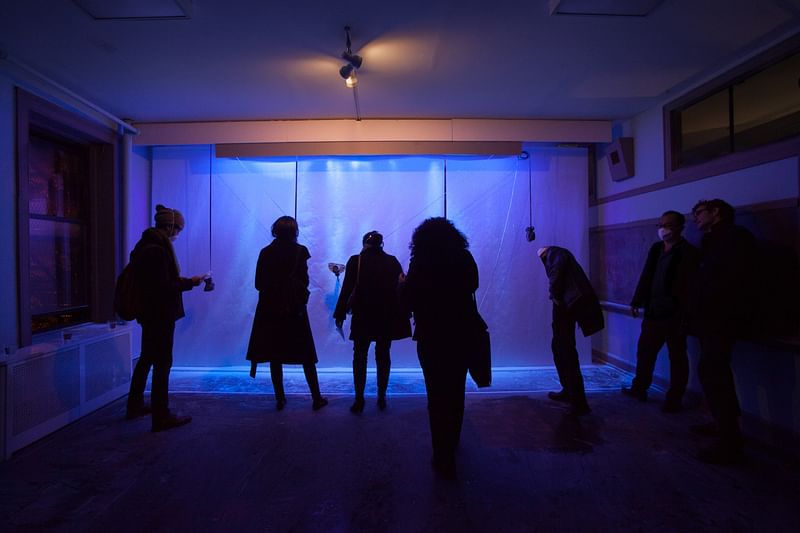
"The drawings were based on the level of contaminant--asbestos, silica, or gypsum--in the captured air samples, exhibited in glass bell jars. The bell jars contained air from the Environmental Protection Agency’s post-Sandy monitor locations; either 'clean' outdoor air or 'dirty' indoor air from buildings."

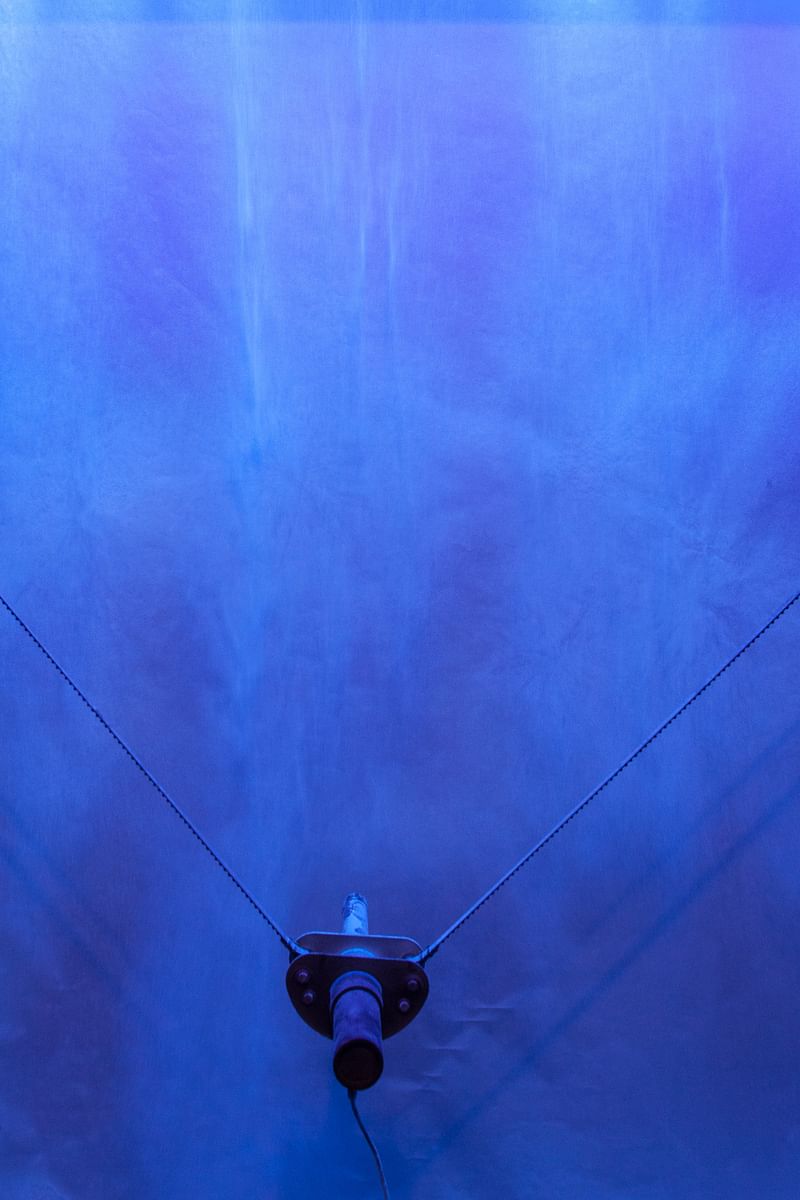
"Instead of drawing with ink, the robotic plotter on one side of the wall discharged invisible positive ions to attract the falling dust; the other plotter used negative ions to clean the wall. The negative ions in the 'clean room' passed through the wall, causing more dust to gather in the 'dirty room.'"
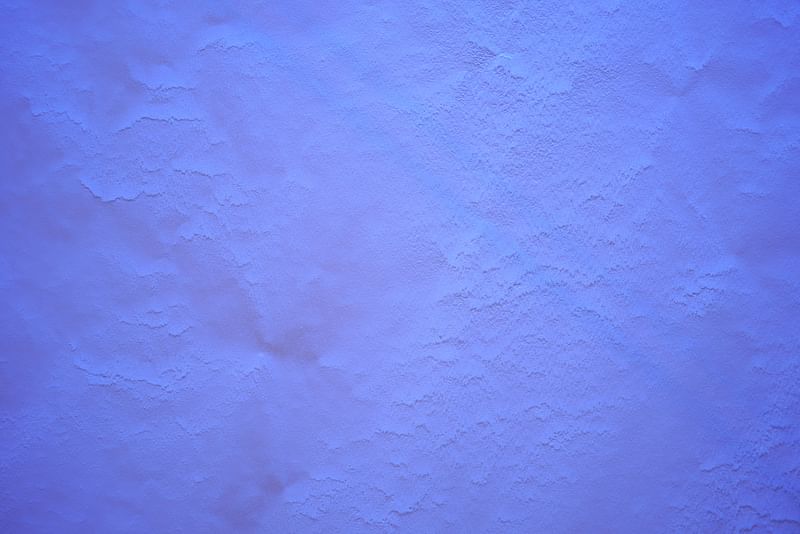
"Weather (Un)Control revealed the cyclical and invisible nature of air contamination after extreme weather events, unseen and overlooked by insurance companies that stake claim to our indoor 'air rights.'"
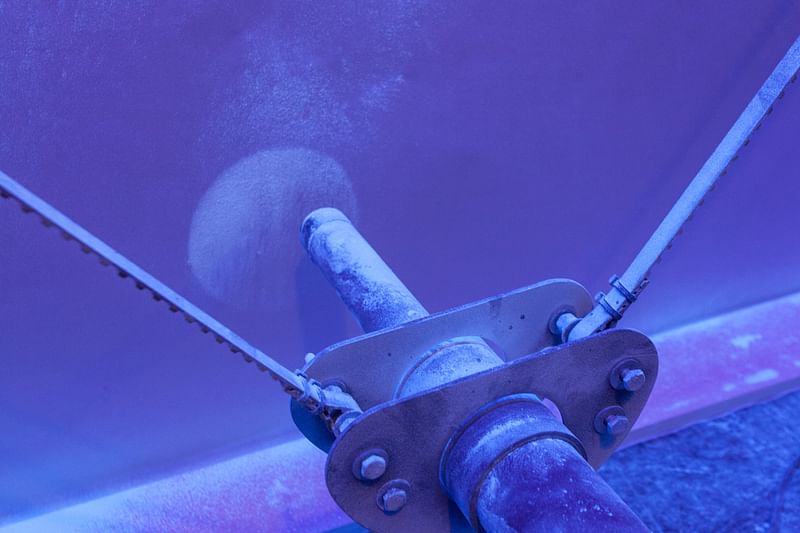
The research and images from the exhibition are now on display at the Bi-City Bienniale of Urbanism/Architecture in Shenzhen, China.
Engineering for the project was developed by Amanda Parkes/Skinteractive Studio.
All images courtesy of MODU.
Similar MODU projects we've featured on Bustler include the "Outdoor Room" in Beijing and their Art Basel "Exhale" pavilion.

Share
0 Comments
Comment as :